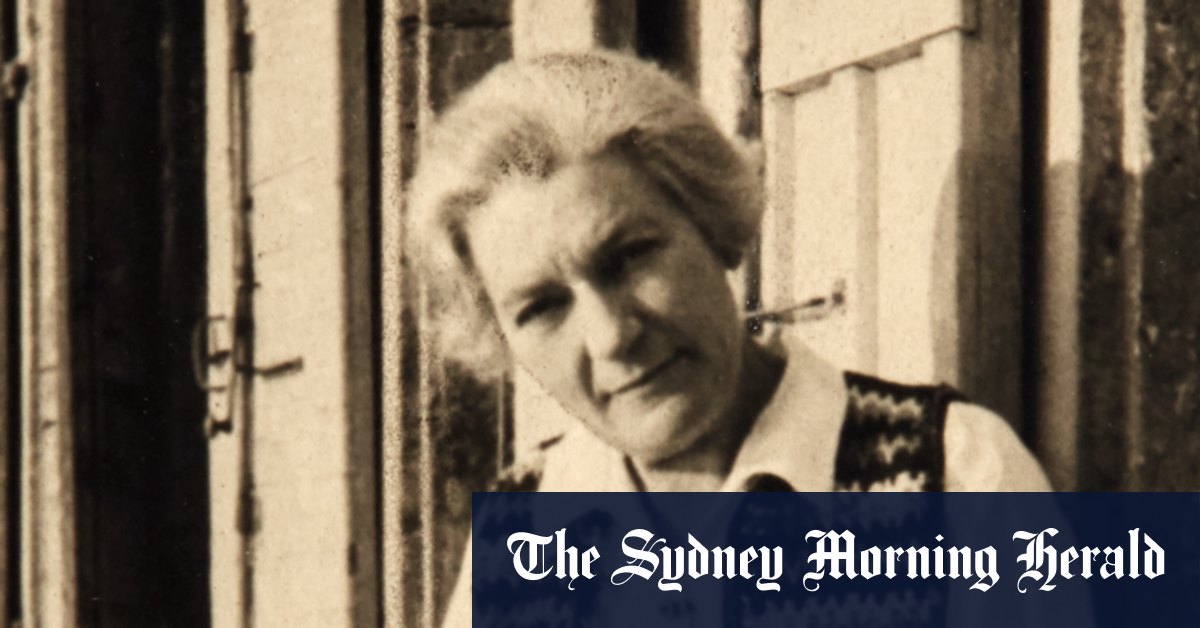
When artist Anne Dangar died 70 years ago, villagers followed her horse-drawn hearse to the local cemetery that overlooked the Rhone river and the artists’ commune the potter called home in France for more than two decades.
In Australia, Dangar’s death went unacknowledged by the press and the local artistic community, apart from a few mournful letters exchanged between friends, notably painter and one-time lover Grace Crowley.
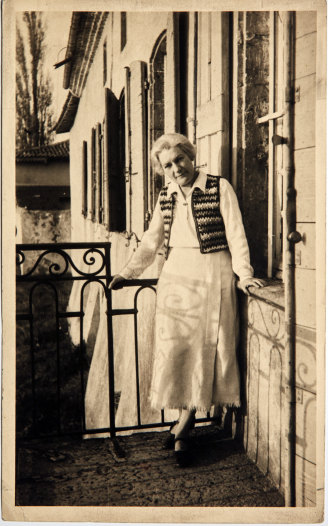
Anne Dangar on the balcony at Moly-Sabata in France in the 1940s.Credit: Art Gallery of New South Wales
While Crowley, Dorrit Black, Grace Cossington Smith and Margaret Preston have received overdue public recognition as Australia reassesses the contribution of 20th-century women artists, Dangar remains an unknown figure to all but a few dedicated art historians, academics and collectors.
Until now. The National Gallery of Australia, Canberra, will stage the largest-ever Australian retrospective of the work of Dangar, opening December 7, featuring more than 136 works plus sketches and letters detailing her life and legacy.
The exhibition runs concurrently with the gallery’s biggest show in 50 years of the Australian post-Impressionist painter Ethel Carrick, another early exponent of modernism, that seismic art movement that upended Old World styles.
“Anne Dangar is among the very few Australian artists to work alongside the European avant-garde in the 20th century,” says Rebecca Edwards, NGA’s curator of Australian art.
“She was the only Australian artist to have meaningfully contributed to cubism in France, the first to teach cubism in Australia and the first, arguably, to exhibit cubist work in Australia, sent in crates to Grace Crowley, who exhibited them on her behalf.
“She stands alone as one of the most dedicated, impactful and truly modern Australian artists of the 20th century. No one in my mind comes close.”
Three hours by train from Paris, just south of Lyon, lies the artists’ community of Moly-Sabata.
Moly, as it is affectionately known, is an 18th-century former customs house, with pretty mint-green shutters, a peach wash exterior and rambling gardens.
The name translates to ‘wet feet’ or ‘wet clogs’, alluding to the estate’s tranquil location on the banks of the Rhone and the seasonal riverine floods that occasionally lap its foundations.
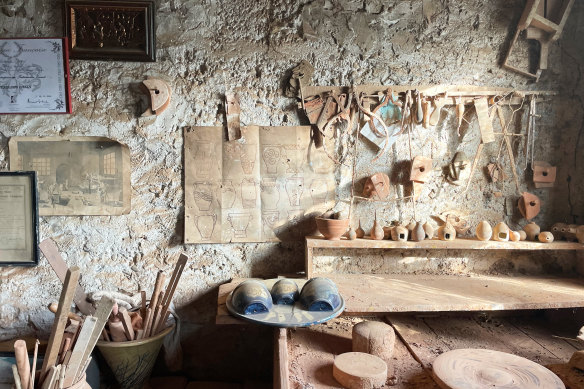
Anne Dangar’s studio at Moly-Sabata.Credit: National Gallery of Australia
Today Moly is an exhibition space and France’s oldest active artist residency, offering four studios and a working pottery kiln for some 30 artists who visit each year.
Back in Dangar’s time it was a nascent ideological project of cubist pioneer Albert Gleizes and his wife Juliette Roche, a rustic and agrarian escape for Gleizes’ artist followers to focus on their practice free from city and commercial pressures.
Residents lived rent-free but were expected to grow their own food and generate communal income through craft work and creating pochoirs – stencilled works on paper – of Gleizes’ paintings. There were between five and eight permanent residents at any one time, with others visiting for shorter periods.
Dangar was 44 when she arrived off the train from Marseilles in 1930, a couple of suitcases in hand. A simple peasant’s life dedicated to art appealed to Dangar, who felt trapped and disillusioned in Sydney after returning from a two-year trip to Paris the year before.
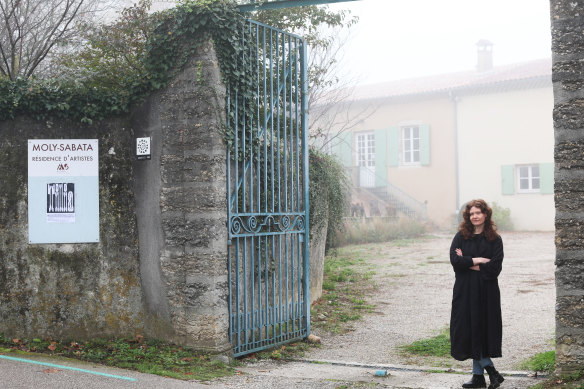
Dr Rebecca Edwards, a curator of Australian art at the National Gallery of Australia, outside Moly-Sabata.Credit: National Gallery of Australia
There, she and Crowley studied under cubist artist Andre Lhote and encountered the works of Gleizes in an exhibition at the Salon des Tuileries. Sydney society, by contrast, felt isolated and small.
Born in Kempsey, Dangar studied and taught at the Julian Ashton Sydney Art School before a Sydney lecture on French impressionist painter Paul Cezanne converted her to the new approaches to modern art.
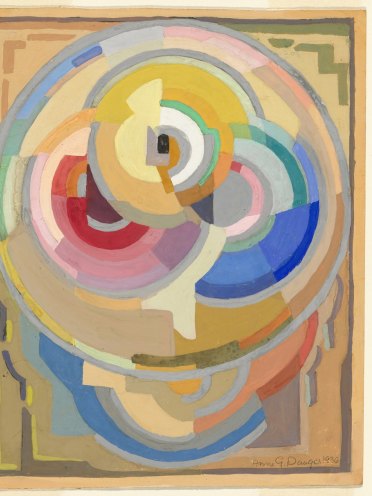
Anne Dangar, Gouache, 1936.Credit: Anne Dangar/National Gallery of Australia
She took up teaching again after Paris but her students were diffident to the movements taking off abroad. She complained to Crowley that the conservatism and commerciality of the Australian art world left her feeling miserable.
Dangar “must live, she must be happy, she must have work for her energetic mind”, Crowley wrote of their reluctant separation. The pair, a couple since the mid-1910s, would never meet in person again.
Their relationship was known to some of their friends and family but, like many women in same-sex relationships at this time, presented as close friends, says Edwards.
The reality of Moly was to fall short of an idyll. In Gleizes she had hoped for a mentor but found an aloof landlord. Still, she stayed.
Over the next 20 years the indomitable “Miss Dangar” emerged as Moly’s galvanising force, its longest artist resident.
As she mastered the traditional skills of pottery making, she translated the principles and techniques of cubism for her inner circle in Australia, writing letters home to Crowley, even lesson summaries for Crowley’s art students.
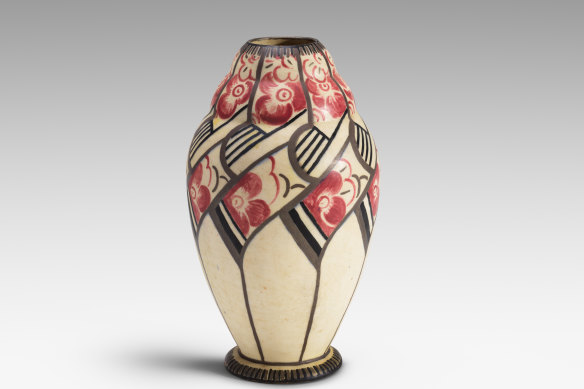
Anne Dangar, Vase, 1926-29.Credit:
Her influence from afar shaped the course of modernism in Australia, says Edwards, who first came across the potter as a curatorial assistant in 2014 while supervising the handling of drawings and archive material placed with the NGA by the descendant of a former resident of Moly-Sabata.
The discovery of 250 letters in Moly’s cellar two years ago shed new light on Dangar’s struggles transitioning from painter to potter.
They have informed Edwards’ deep scholarship that underpins the coming NGA retrospective and draws together rarely accessed archival material, including Dangar’s sketchbooks, tracings, ceramic designs and teaching notes.
In 1930 Dangar wrote home to say she was taking lessons from “the drunken potters of St Desirat”.
To Gleizes she spelled out a brutal daily routine: “I plunge into the [Rhone] at 5am – make my coffee and start forth on my six-mile walk to the pottery at 6.30. I get back at nine at night, make my bed and tumble into it.
“In summer, I boil eggs or potatoes on a little spirit lamp, eat raw vegetable and fruit.”
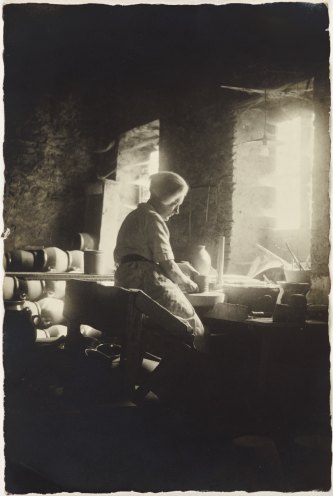
Anne Dangar at work in the studio in Roussillon, France, in the 1940s.Credit: Art Gallery of New South Wales
By 1932 Dangar was working alongside Jean-Marie Paquaud at the Poterie Bert, now Poterie de Chals, using its ancient wood-fire oven and sourcing its distinctive red clay from on-site brick pits.
“It was such a gender clash,” Moly curator Joel Riff says of Dangar’s ventures in pottery. “Traditionally, men are making the pottery and only women can decorate.”
Dangar’s first experiments in pottery were glazed earthenware with green and brown spirals and free floral arabesques, which were sold at local markets.
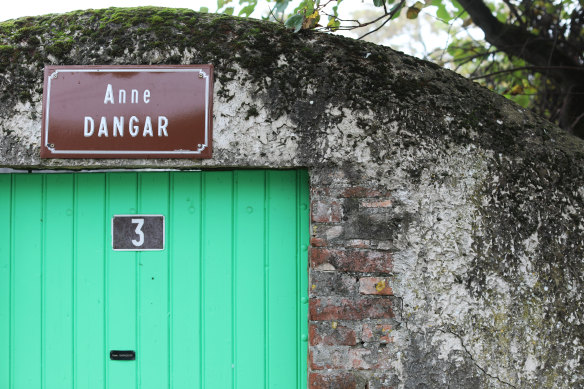
Anne Dangar has been feted in France but not at home. Credit: National Gallery of Australia
As her technique improved, her marks became more refined, incorporating Gleizes’ designs and improvising with cubist-inspired decorations to settle on a unique visual style.
“To me, what is unique is the combination of modern art with traditional craft,” Edwards says. “She united rustic French pottery with modern art – cubism – as well as traditional and regional motifs and designs. The spiral connected with Gleizes’ cubist philosophies surrounding the idea of rotation.”
One of the largest known private collections of Dangar’s work in France is held by Daniel Steinbach, Dangar’s godson, who lives in a 1000-year-old chateau inherited from his grandparents, less than one kilometre from Moly.
Dangar was a close friend of Steinbach’s English-speaking mother Andre, who was among a group of families, a local priest and a one-time communist official who kept Dangar safe during Nazi occupation and occasionally smuggled her out of Moly, where she had been confined because of her Australian citizenship.
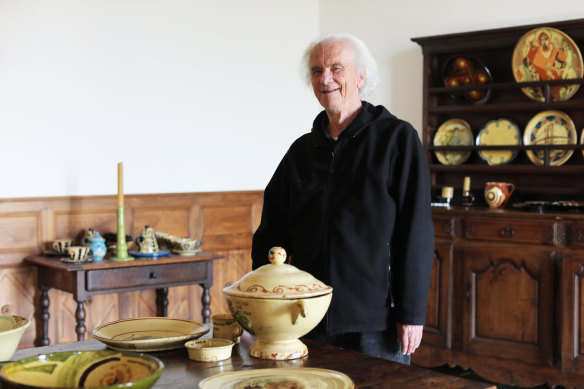
Anne Dangar’s godson Daniel Steinbach with some of her work. Credit: National Gallery of Australia
Steinbach has a dim memory of fossicking for mushrooms with Dangar on a summer’s day in 1951 in the fields behind the chateau where grapes are now grown: “She must have been sick because we didn’t wander far.”
His mother thought him too young to attend Dangar’s funeral that autumn when she died in 1952, aged 65.
Pride of place among his collection arrayed in the long dining room is a christening plate bearing the biblical figure of Daniel, who escaped the lion’s den, and remnant pieces from a table setting Dangar gifted Steinbach’s parents on their wedding day. There’s a bowl from which he ate porridge as a child, and a nativity scene, pieces missing, that he retrieved from the attic.
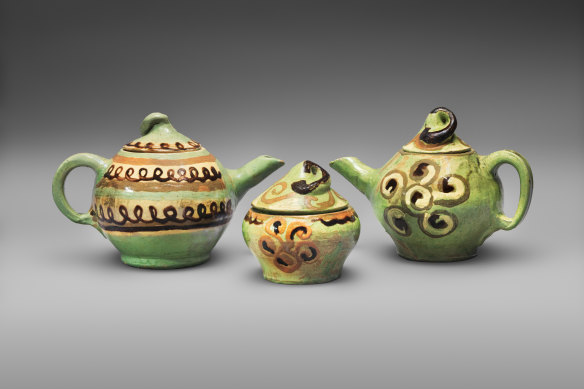
Anne Dangar’s Moroccan-style tea set (1940-48).Credit: National Gallery of Australia
Of great sentimental value is a plate Dangar decorated with a sailing ship to commemorate the D-Day landings in Normandy. It’s the only dated work of Dangar’s. All bear the initials MSD, standing for Moly-Sabata Dangar, the holy grail for collectors of Dangar pottery.
Crates of artistic ceramics were also sent to Crowley in Sydney, who shared these pieces of wheel-thrown earthenware among Dangar’s friends and family, and sold them on her behalf. Some consignments arrived broken and had to be glued together.
By the late ’30s, Dangar’s cubist designs were in the hands of artists and writers including Ruth Ainsworth, Eileen Berndt, Dorrit Black and Rah Fizelle, and are still likely to be with their descendants.
Crowley held small exhibitions in her Sydney studio of Dangar’s work in her absence – arguably the earliest exhibitions of cubist art in Australia. Dangar’s influence is credited with setting Crowley and her new partner Ralph Balson on their path to abstraction.
“Anne Dangar is the unseen driving force behind key moments in the development of Australian modernism, but has disappeared in the shadows,” Edwards says.
In France there has been an awakening to Dangar’s importance since the late 1980s, with her work featuring in nine surveys of ceramics in France and four exhibitions devoted to her work, including at the Pompidou Centre. Riff feels her presence at Moly “everywhere”, though fire gutted the building in 1984, wiping physical traces of her time.
A French version of Antiques Roadshow aired three years ago, causing a new flurry of interest: a Dangar plate purchased for €5 ($8) was valued at several thousand more. It sent French locals rummaging through their cupboards.
“Albert Gleizes is more famous than Dangar in France but at the moment she is – how do you say? – hotter and more celebrated among young potters,” Riff notes.
“She appeals to their own version of modernity, and her life, lived with humility and dedicated to her practice, resonates for those [for] whom art and craft is the same.
Loading
“Young artists no longer want to hear about 20th-century painters. There is a huge fan base for Dangar here and some even want to travel to Australia for the show.”
Why has she been forgotten? Partly the tyranny of distance from Australia, says Edwards, but also that art-craft divide where pottery and ceramics were once written off as decorative domestic ware.
“She is the only one of her inner circle to have sustained a distinct practice in cubism, and yet because she was a potter it was dismissed as craft,” Edwards says.
Dangar is interred next to Gleizes in the cemetery of Sablons. Their marble crypt is a site of homage, with flowers and clay cones laid at its feet. Crowley tried to erect a permanent tribute to Dangar but faced institutional disinterest.
In one of her last letters to Crowley in February 1951, Dangar pondered the fickle nature of the art world: “I wonder when Sydney will deign to give you and me orders? Perhaps in 100 years they’ll pay fabulous prices for us darling, and we’ll smile down upon ’em from above!”
Anne Dangar is at the National Gallery of Australia, Canberra, from December 7 to April 27. The writer travelled to France with the assistance of the National Gallery of Australia.
To read more from Spectrum, visit our page here.



